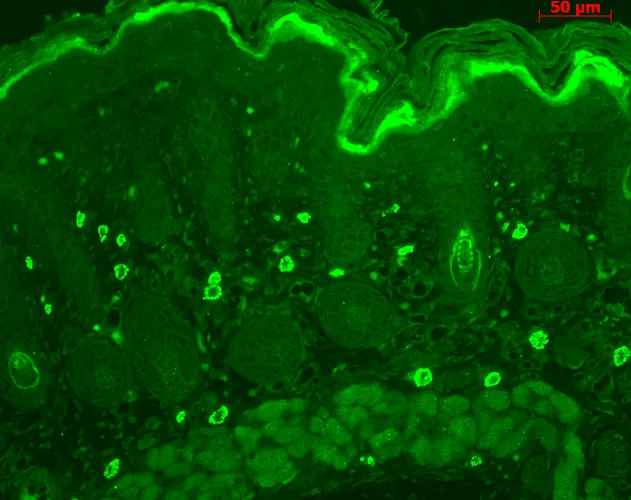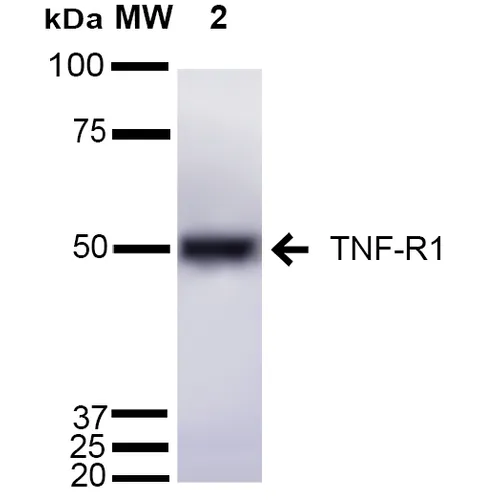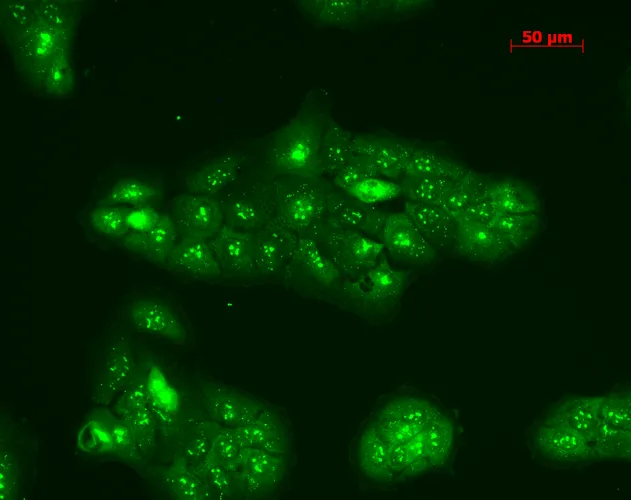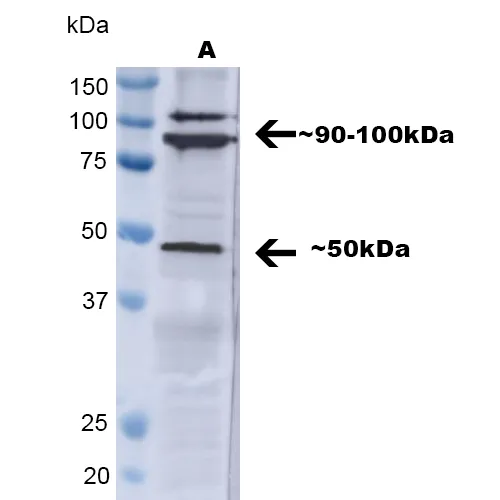TNF-R1 Antibody
CAT:
400-SPC-170S
Size:
12 µg
Price:
Ask
- Availability: 24/48H Stock Items & 2 to 6 Weeks non Stock Items.
- Dry Ice Shipment: No














TNF-R1 Antibody
- Background: The Tumor Necrosis Factor Receptor (TNFR) also known as Cluster of differentiation (CD120) is a protein that belongs to the (TNF)/ (TNFR) superfamily. TNF interacts with two distinct receptors TNFR1 and TNFR2. These receptors share no homology on their cytoplasmic sequences(1,3).TNFR1 also known as p55/p60 is a high affinity receptor for TNF-α. The TNFR1 has an extracellular domain with variable numbers of cysteine-rich repeats. The functional properties of TNFR1 are targets in new therapies for osteoporosis, chronic inflammatory and autoimmune diseases (1, 2). The TNF-α/TNFR1 receptor complex is responsible for the recruitment and the subsequent activation of the caspase (aspartate-specific cysteine proteases) that regulate apoptosis.
- Description: Rabbit Anti-Mouse TNF-R1 Polyclonal
- Specifications: Detects ~55kDa. Other bands present may be the result of oligomerization, self-aggregation and/or cleavage of the TNF-R1 extracellular domain.
- Product Name Alternative: Cancer, Apoptosis, Cell Signaling, Cardiovascular System, Atherosclerosis
- CAS Number: 9007-83-4
- UNSPSC: 12352203
- Gene ID: 7132
- Swiss Prot: P19438
- Cellular Locus: Cell Membrane | Golgi Apparatus | Golgi Apparatus Membrane
- Host: Rabbit
- Species Reactivity: Human, Mouse, Rat, Bovine, Monkey, Dog, Rabbit
- Immunogen: Peptide corresponding to AA 20-43 of the mouse TNF-R1 sequence, identical to rat and human over those residues
- Target: TNFR1
- Clonality: Polyclonal
- Conjugation: Unconjugated
- Validated Applications: WB, IHC, ICC/IF, IP
- Purification: Peptide Affinity Purified
- Concentration: 1 mg/ml
- Dilution: WB (1:1000), IHC (1:100), ICC/IF (1:100); optimal dilutions for assays should be determined by the user.
- Weight: 0.012
- Buffer: PBS pH7.4, 50% glycerol, 0.09% sodium azide *Storage buffer changes when conjugated
- Precautions: Not for use in humans. Not for use in diagnostics or therapeutics. For in vitro research use only.
- References & Citations: 1. Kontermann R.E., et al. (2008) J Immunother. 31(3):225-34. 2. Hehlgans T. and Pfeffer K. (2005) Immunology. 115(1):1-20. 3. Al-Lamki S., et al. (2005) The Faseb Journal. 19:1638-1645.
